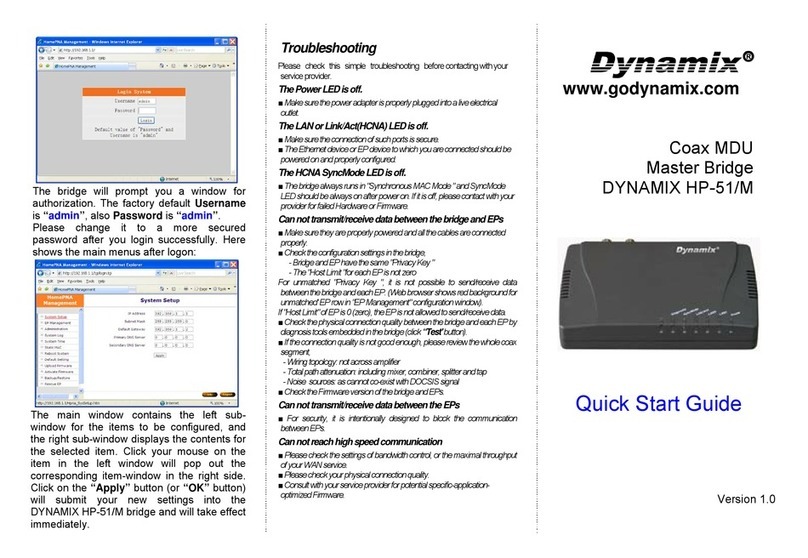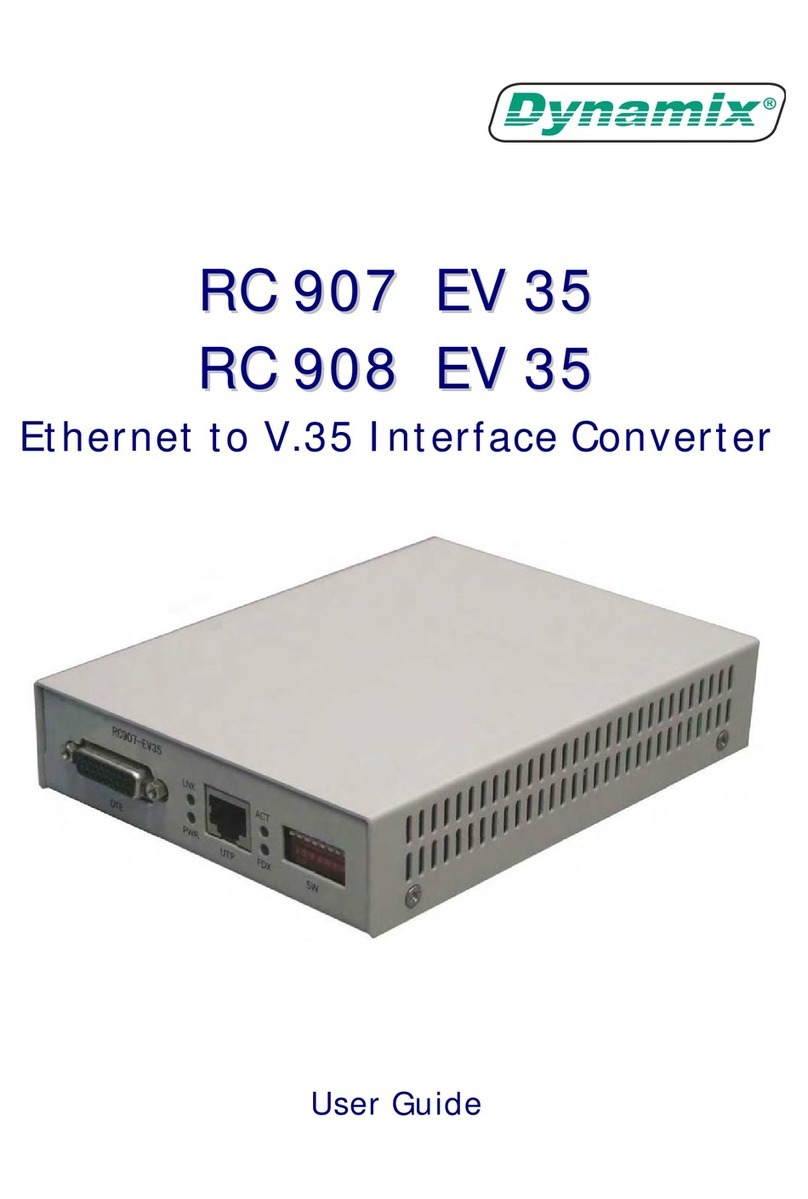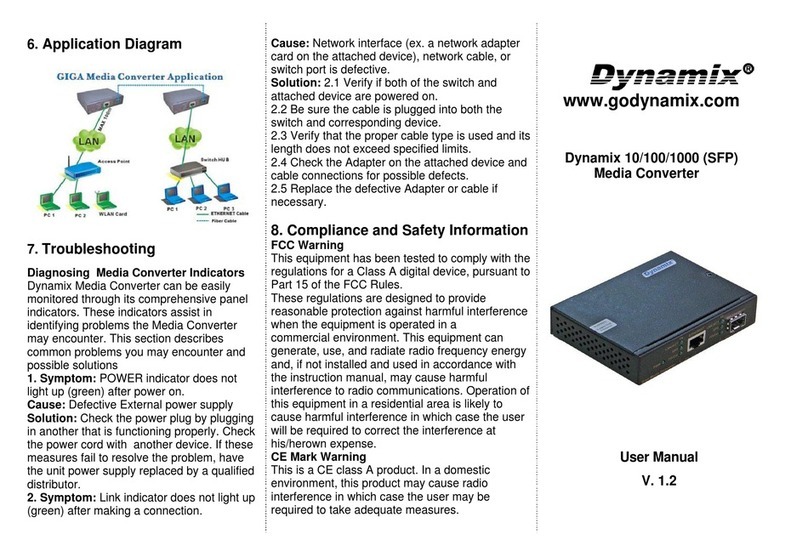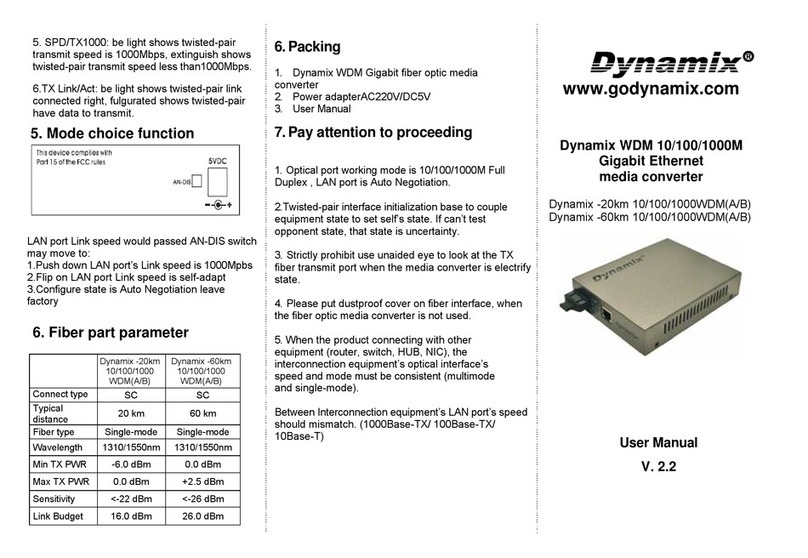E1 interface alarm Indicator
:
LOS red: On: loss of receiving signal at local E1;
Flashing: loss of receiving signal at remote E1 (only effective at fractional
mode);
Off: Local and remote signal are normal
AIS red: On: Receiving all ‘1’ AIS alarm at the local E1
Flashing: Receiving all ‘1’ AIS alarm at the remote E1 (only effective at
fractional mode);
Off: Local and remote signal are normal
LOF red: On: Receiving Loss of frame LOF alarm at the local E1 (only effective at
fractional mode);
Flashing: Receiving Loss of frame LOF alarm at the remote E1 (only
effective at fractional mode);
Off: Local and remote signal are normal
LOMF red: On: Receiving Loss of Multi-frame LOMF alarm at the local E1 (only
effective at multi-fractional mode)
Flashing: Receiving Loss of Multi-frame LOMF alarm at the remote E1
(only effective at multi-fractional mode);
Off: Local and remote signal are normal
CV red: On: Receiving code violation CV alarm
Flashing: Receiving code violation CV alarm (only effective at fractional
mode);
Off: Local and remote signal are normal
CRC red: On: Receiving CRC4 check error alarm
Flashing: Receiving CRC4 check error alarm (only effective at fractional
mode);
Off: Local and remote signal are normal
Attention: This equipment supports CRC4 check self-adaptive function. When there
is CRC4 check information in the received E1 signal, the check
function is automatically enabled. The CRC alarm indicator will be
on, only when there is CRC4 fault; when there is no CRC4 check
information in the received E1 signal, the check function is
automatically disabled, and the CRC alarm indicator is disabled.
E1 interface:
BNC coaxial interface: TX, 75
Ω
unbalanced signal output
RX, 75
Ω
unbalanced signal input
RJ-45 interface: 1, 2 pin, 120
Ω
balanced signal output
4, 5 pin, 120
Ω
balanced signal input
Attention: The default configuration is BNC coaxial interface effective. If you want to
use the RJ-45 120
Ω
interface, the dip converter SW6 on the
bottom should be adjusted.
8
































